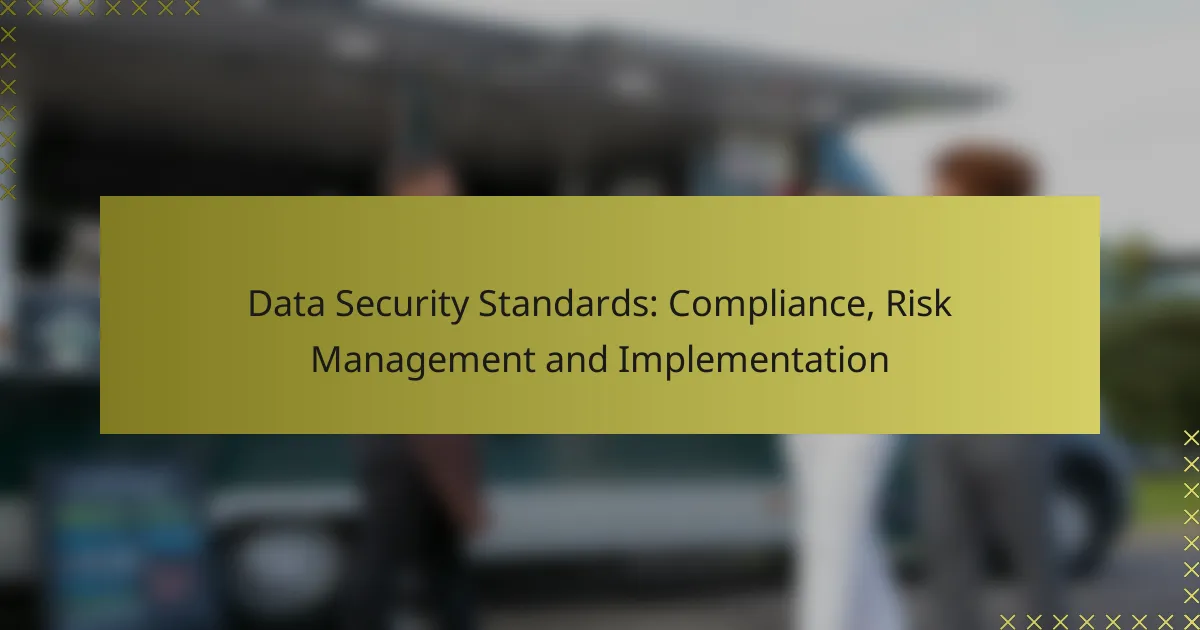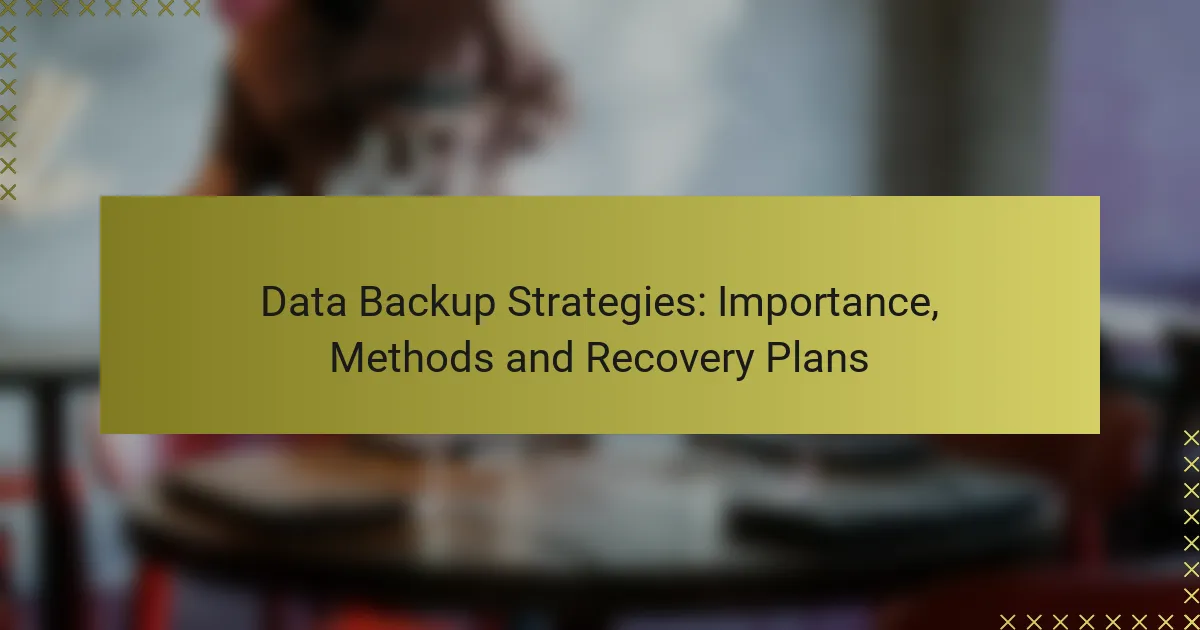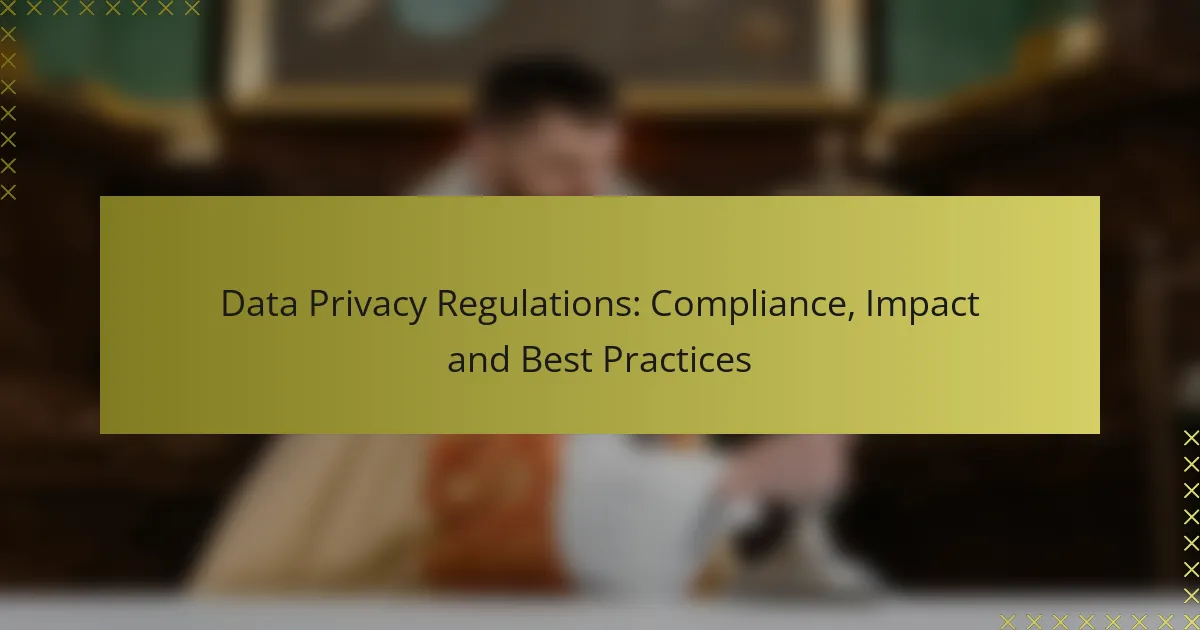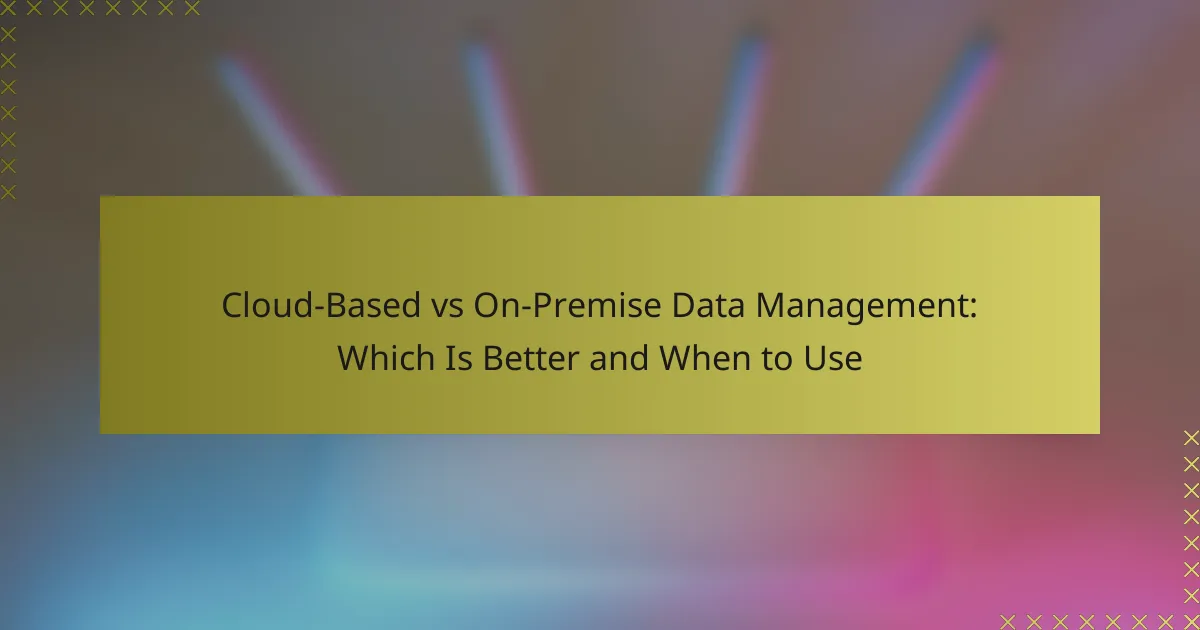Data security standards are essential for organizations to manage and protect sensitive information effectively. These frameworks provide crucial guidelines for compliance, risk management, and implementation, ensuring that data security is maintained across various sectors. Adhering to these standards not only safeguards information but also mitigates the risks of legal repercussions and financial losses associated with non-compliance.

What are the key data security standards for compliance?
Key data security standards for compliance include frameworks and regulations that help organizations manage and protect sensitive information. These standards provide guidelines for risk management, implementation, and ongoing compliance to ensure data security across various sectors.
ISO/IEC 27001
ISO/IEC 27001 is an international standard that outlines the requirements for an information security management system (ISMS). It helps organizations establish, implement, maintain, and continually improve their information security practices.
To achieve ISO/IEC 27001 certification, organizations must conduct a thorough risk assessment, define security controls, and regularly review and update their ISMS. This standard is applicable to any organization, regardless of size or industry.
NIST Cybersecurity Framework
The NIST Cybersecurity Framework provides a policy framework of computer security guidance for how private sector organizations can assess and improve their ability to prevent, detect, and respond to cyber attacks. It is structured around five core functions: Identify, Protect, Detect, Respond, and Recover.
Organizations can adopt this framework to create a customized approach to managing cybersecurity risks. The flexibility of the NIST framework allows organizations to prioritize their security measures based on specific threats and vulnerabilities.
GDPR Compliance
The General Data Protection Regulation (GDPR) is a regulation in EU law that focuses on data protection and privacy for individuals within the European Union. It mandates strict guidelines for the collection, storage, and processing of personal data.
Organizations that handle the personal data of EU citizens must ensure compliance with GDPR by implementing measures such as obtaining explicit consent, ensuring data portability, and maintaining transparency in data processing activities. Non-compliance can result in significant fines, making adherence crucial.
HIPAA Regulations
The Health Insurance Portability and Accountability Act (HIPAA) establishes national standards for the protection of sensitive patient health information in the United States. It applies to healthcare providers, insurers, and their business associates.
To comply with HIPAA, organizations must implement safeguards to protect electronic health information, conduct regular risk assessments, and provide training for employees. Failure to comply can lead to hefty fines and legal repercussions.
PCI DSS Requirements
The Payment Card Industry Data Security Standard (PCI DSS) is a set of security standards designed to ensure that all companies that accept, process, store, or transmit credit card information maintain a secure environment. Compliance is essential for any organization handling payment card data.
Key requirements include maintaining a secure network, implementing strong access control measures, and regularly monitoring and testing networks. Organizations must complete a self-assessment questionnaire or undergo a formal assessment based on their transaction volume to demonstrate compliance.

How to implement data security standards effectively?
Implementing data security standards effectively involves a systematic approach that includes assessing risks, developing policies, training staff, and utilizing encryption. These steps help organizations safeguard sensitive information and comply with relevant regulations.
Conduct a risk assessment
A risk assessment identifies potential vulnerabilities in your data security framework. Start by evaluating all data assets, including where they are stored and how they are accessed. Consider both internal and external threats, such as cyberattacks and employee negligence.
Utilize tools and methodologies like the NIST Cybersecurity Framework or ISO 27001 to guide your assessment. Regularly update your risk assessment to reflect changes in technology and business processes.
Develop a data protection policy
A data protection policy outlines how your organization will manage and protect sensitive information. This policy should define roles and responsibilities, data handling procedures, and incident response protocols.
Ensure that the policy complies with relevant regulations such as GDPR or HIPAA, depending on your location and industry. Regularly review and update the policy to adapt to new threats and regulatory changes.
Train employees on security protocols
Employee training is crucial for effective data security. Conduct regular training sessions to educate staff about security best practices, such as recognizing phishing attempts and securely handling sensitive data.
Consider using interactive training modules and simulations to engage employees. Reinforce training with periodic refreshers and updates on new security threats or changes in policy.
Utilize encryption technologies
Encryption technologies protect data by converting it into a secure format that can only be read by authorized users. Implement encryption for data at rest, such as files stored on servers, and for data in transit, like information sent over the internet.
Choose encryption standards that meet industry best practices, such as AES-256. Regularly review and update encryption methods to counter evolving security threats.
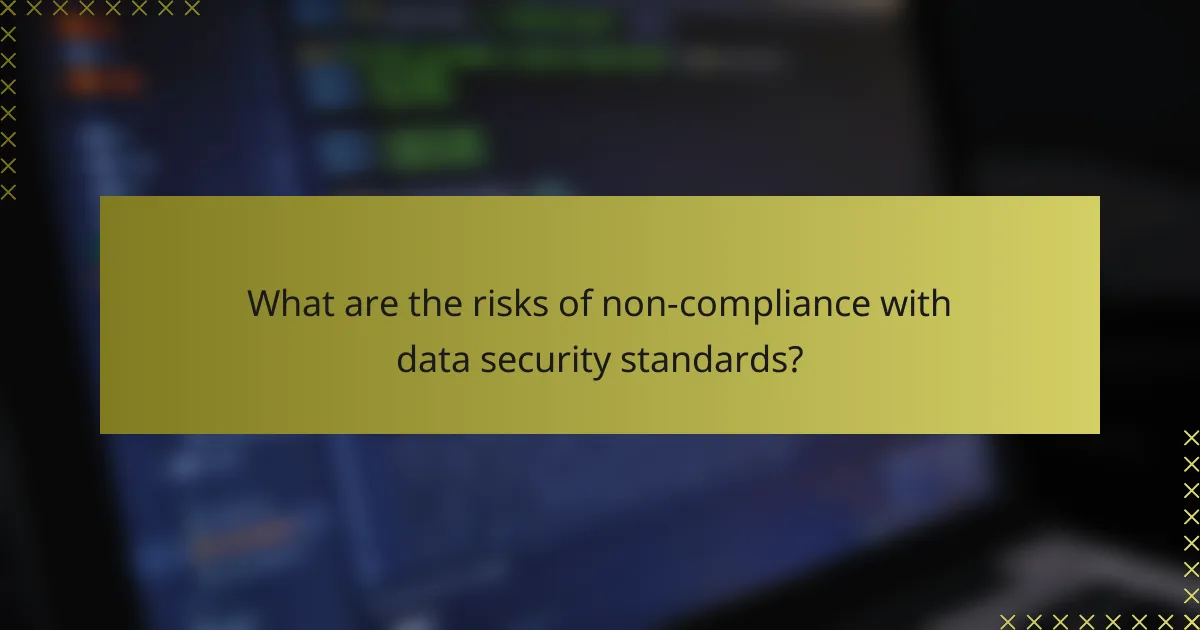
What are the risks of non-compliance with data security standards?
Non-compliance with data security standards can lead to significant risks, including legal repercussions, data breaches, and financial losses. Organizations that fail to adhere to these standards may face severe consequences that affect their operations and reputation.
Legal penalties
Organizations that do not comply with data security standards may incur legal penalties, which can include hefty fines and sanctions. Regulatory bodies often impose these penalties to enforce compliance with laws such as GDPR or HIPAA, depending on the jurisdiction.
For example, fines for GDPR violations can reach up to 4% of annual global turnover or €20 million, whichever is higher. This emphasizes the importance of understanding and adhering to relevant regulations to avoid costly legal issues.
Data breaches
Non-compliance significantly increases the risk of data breaches, which can expose sensitive information to unauthorized access. When security measures are inadequate, hackers can exploit vulnerabilities, leading to unauthorized data access.
Data breaches not only compromise customer trust but also require organizations to invest in remediation efforts, which can be extensive and disruptive. Implementing robust security protocols is essential to mitigate this risk effectively.
Reputation damage
Failure to comply with data security standards can severely damage an organization’s reputation. Customers and partners may lose trust in a company that has experienced a data breach or has been penalized for non-compliance.
Rebuilding a tarnished reputation can take years and often requires significant investment in marketing and public relations efforts. Maintaining compliance is crucial for preserving a positive public image.
Financial losses
Non-compliance can lead to substantial financial losses beyond legal penalties and remediation costs. Organizations may face increased insurance premiums, loss of business, and potential lawsuits from affected customers.
Research indicates that the average cost of a data breach can range from tens of thousands to millions of dollars, depending on the severity and scale of the incident. Investing in compliance measures is a proactive approach to safeguard against these financial repercussions.
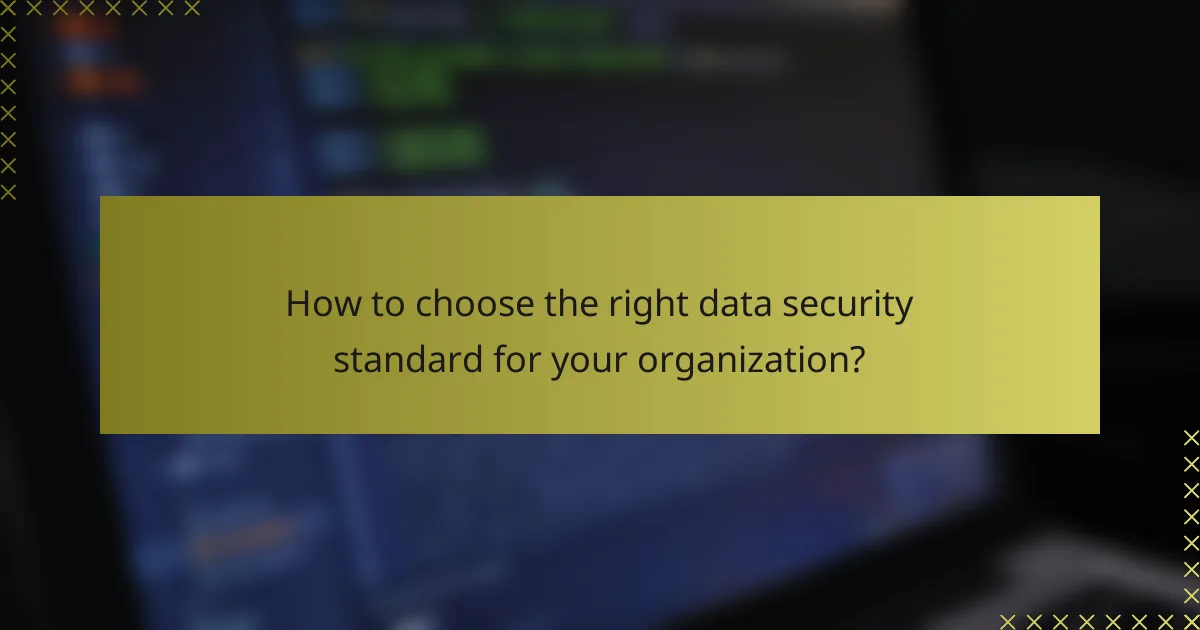
How to choose the right data security standard for your organization?
Selecting the appropriate data security standard involves assessing your organization’s specific needs, industry requirements, and the ability to scale and adapt over time. A well-chosen standard not only enhances security but also ensures compliance and risk management align with your operational goals.
Assess organizational needs
Begin by identifying the types of data your organization handles and the potential risks associated with it. Consider factors such as data sensitivity, volume, and the impact of data breaches on your operations and reputation.
Engage stakeholders from various departments to gather insights on their security concerns and requirements. This collaborative approach helps ensure that the selected standard addresses the unique challenges your organization faces.
Evaluate industry requirements
Different industries have specific regulations and standards that must be adhered to, such as HIPAA for healthcare or PCI DSS for payment processing. Research these requirements to ensure your chosen standard aligns with legal obligations and best practices within your sector.
Consult industry peers or associations for insights on common standards adopted in your field. This can provide valuable context and help you understand the competitive landscape regarding data security.
Consider scalability and flexibility
Your organization’s data security needs may evolve as it grows or changes. Choose a standard that can scale with your business and adapt to new technologies or regulatory changes. This flexibility can save time and resources in the long run.
Evaluate whether the standard allows for customization to fit your organization’s specific workflows and processes. A one-size-fits-all approach may not be effective, so ensure the standard can be tailored to your unique environment.
